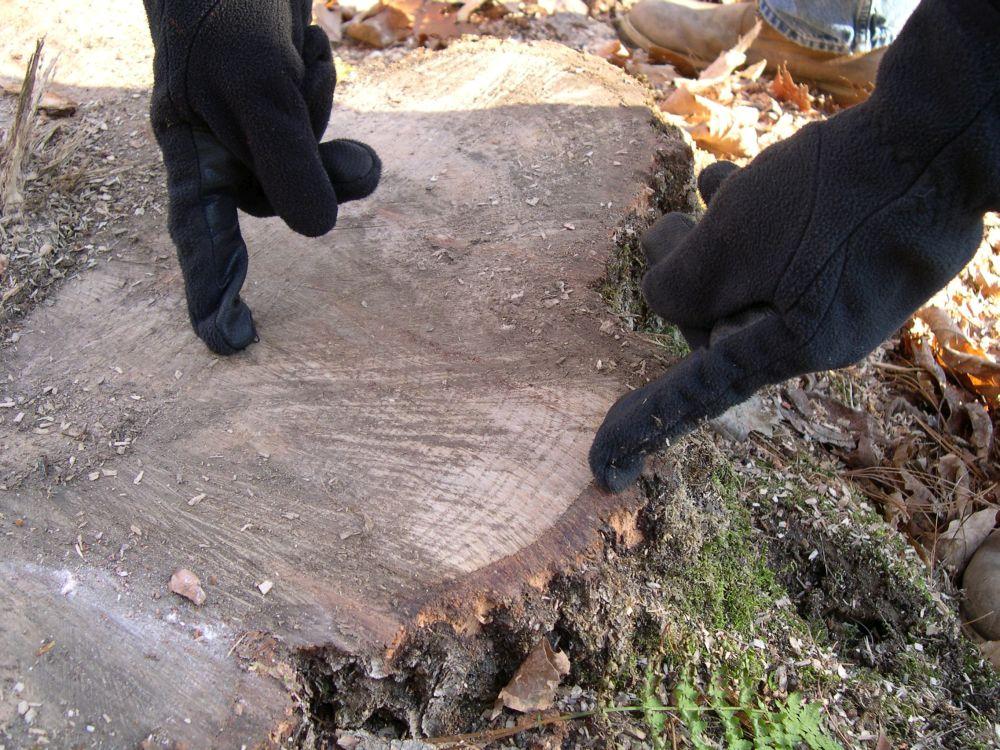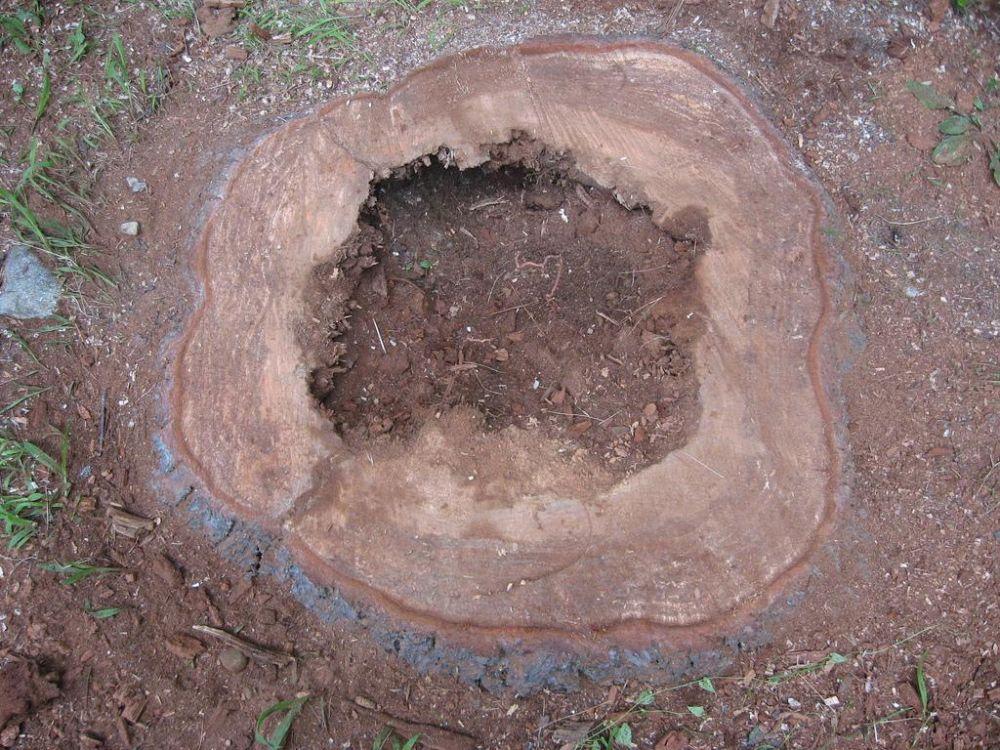- Tags:
- Something Wild

Freshly cut red oak stump reveals growth rate. No decay in the outermost rings. Photo Dave Anderson
Ecologist, Tom Wessels instills an appreciation for stumps as an accurate record of forest history. Stumps are relatively easy to sneak up on and observe. Weathered annual tings reveal trees' age when cut. Note how the width of rings indicate variable rates of growth. To ascertain when a tree was cut, you need to age trees that regenerated on a site. Some stumps last decades. Hardwood stumps of broad-leaf deciduous trees--beech, birch, maple, ash---are rot prone. Stumps decay quickly and uniformly in about 25 years.

"Heart-rot" begins in response to injuries or insects often before trees were cut. More rot resistant hardwoods include oak, locust and chestnut. They're the exception to the rot-prone rule. These resistant hardwoods rot first from their centers as outer sapwood is less porous and more resistant to decay than center heartwood.
Softwoods, the conifers, exhibit the opposite pattern. Their stumps begin to rot first in the outer sapwood. A conifers' dense heartwood, which has few carbohydrates, is not porous and as such holds little water. The heartwood contains resins which are toxic to insects and fungi to inhibit rotting. Long-lasting conifer stumps become substrates for moss and lichens which require time to develop. You may still find ancient stumps from pine salvage following the Great Hurricane of 1938.
Conifer knots are most rot resistant. Remains of ancient pine stumps appear like a wagon wheel hub with radiating spokes or fins of branches remaining after decades of decay, rotting from the inside first. The oldest stumps are almost always hemlock, whose bark is most rot resistant.
Waves of Grain from Keith Skretch on Vimeo.
